May 27, 2025
Author:Amanda Lyu
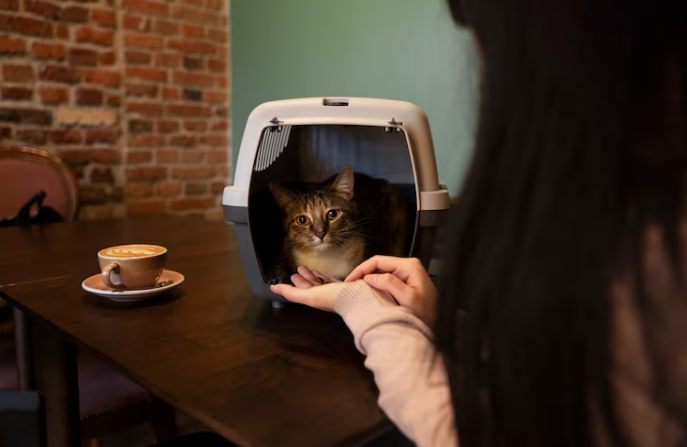
You thought one cat would be easier. But now your “independent” kitty is shredding the couch, meowing nonstop, or shadowing you from room to room. Something feels off, but it’s hard to pin down.
That’s single cat syndrome. It’s not a myth. It’s a behavioral pattern that shows up when cats lack consistent companionship, mental stimulation, or predictable structure. And if left unaddressed, it can turn a contented pet into an anxious one.
This article will show you what’s really going on—and how to stop your solo cat from silently slipping into distress.
Here’s what you’ll get:
● What single cat syndrome actually is—and what causes it
● Behavioral red flags that point to a lonely, stressed cat
● Mental enrichment tips that don’t require adding another pet
● WOpet tools that simplify stimulation, interaction, and structure
● Signs your cat might benefit from a companion—and when that backfires
If your cat is acting out, they’re not misbehaving. They’re trying to cope with being the only one.
It’s not a personality issue. It’s not because your cat’s “spoiled.” Single cat syndrome is a behavioral response to unmet social and environmental needs.
You’ll usually see this in:
● Young cats raised without siblings
● Orphaned kittens adopted solo
● Indoor-only cats without access to outdoor stimuli
● Solo cats left alone for long hours without structure or play
One study found that cats who lacked early socialization with littermates were significantly more likely to exhibit anxiety, fear-based aggression, and attention-seeking behavior later in life. The condition doesn’t always show up immediately. Some cats adjust well, for a while. But as they grow and adapt, boredom, frustration, or loneliness can build up under the surface.
That’s when the scratching, crying, or compulsive grooming starts. And without the right support, those patterns stick.
Not every meow means loneliness. Not every scratch on the wall means boredom. But if your solo cat’s habits have shifted—and you’re seeing patterns, not one-offs—it’s time to take a closer look. These aren’t quirks. These are cues. Here are the most common behavioral flags tied to single cat syndrome:
Chronic vocalization in solo cats—particularly yowling, chirrups, or trill-like calls—is often a direct signal of social frustration or anticipatory anxiety.
Cats vocalize to initiate contact. When there's no feline companion and the human is absent or unresponsive for extended periods, the cat may increase frequency and volume to compensate. This is especially true in oriental breeds like Siamese, which are genetically predisposed to higher vocal tendencies and social dependence.
Scratching, chewing, and tipping objects aren’t just mischief—they’re displacement behaviors triggered by understimulation and confinement stress.
Cats need vertical space, interactive play, and consistent environmental change to replicate hunting cycles and territorial exploration. Without that, stress manifests in physical outlets:
● Scratching baseboards, door frames, or sofa arms helps discharge energy and self-soothe
● Chewing cords or plastic bags may indicate a sensory-seeking behavior, often driven by a lack of novelty
● Opening cabinets or knocking items off surfaces stems from exploratory frustration—what’s often misread as defiance is actually your cat trying to create stimulation manually
These behaviors increase during extended alone time and in homes without structured enrichment like puzzle feeders, window perches, or interactive play routines.
Overgrooming—technically known as psychogenic alopecia—is one of the clearest physical markers of emotional distress in cats living alone. It’s typically triggered by environmental monotony and an absence of predictable routines.
Here’s what that looks like:
● Symmetrical bald spots, especially on the abdomen, inner thighs, or forearms
● Frequent licking episodes, sometimes for 20–30 minutes at a time
● Broken whiskers or fur regrowth in irregular patches
These cats often groom to self-regulate. Grooming releases endorphins, which temporarily reduce stress, but the repetitive nature becomes compulsive. This pattern closely mirrors trichotillomania in humans and requires both environmental intervention and behavioral redirection.
These cats substitute their human as a social anchor but lack the tools to self-soothe or entertain themselves when alone.
Warning signs include:
● Overreactions to your departure (scratching the door, vocalizing, pacing)
● Sleeping only when you’re present and
● Anxiety symptoms, like drooling or panting, occur when left alone
This level of dependency can impact both pets and owners' quality of life and often worsens without structured independence training and environmental independence (e.g., treat-dispensing cameras or solo-play toys).
Intermittent aggression in solo cats, especially when unprovoked, is commonly misinterpreted as personality or dominance. In reality, it’s often the result of redirected frustration or poor socialization during critical development periods.
You might see:
● Sudden swatting when approached
● Biting without warning after a few seconds of petting (known as petting-induced aggression)
● Intense play aggression directed at ankles or hands, especially in younger cats
These behaviors emerge when a cat lacks appropriate outlets for hunting, play, and tactile feedback. They treat human movement or touch as prey simulation, not because they’re “mean,” but because no other stimulus exists to complete their behavioral cycle.
Behavioral modification in these cases often requires a multi-pronged intervention, including:
● Scheduled interactive play sessions with wand toys
● Redirecting energy into structured solo-play with motion-sensitive toys
● Remote treat dispensers that reinforce calm, non-aggressive behavior
When these patterns show up together or intensify over time, your cat isn’t acting out—they’re reaching out. You just have to read the signs.
Getting a second cat isn’t the only—or even the best—solution for every household. Many solo cats thrive with the right environment, but they need structured stimulation to stay mentally sharp and emotionally balanced. Environmental enrichment is the gold standard for this. It doesn’t just fill time. It activates natural instincts, reduces anxiety, and promotes healthier behaviors.
According to feline-related studies, enriched environments lower stress-related behaviors and reduce the need for behavioral medication in indoor cats. Let’s break this down into actionable categories.
Cats rely on rhythm. Inconsistent schedules increase stress. You can fix this by structuring:
● Meal times
● Play windows
● Sleep/wake cues tied to lighting or noise levels
The WOpet Smart Feeder helps automate feeding times with precise portion control, even when you’re away. It reinforces predictability while letting your cat stay on a stable internal clock.
In the wild, cats spend up to six hours a day hunting. Indoor cats don’t have that outlet, and they act out because of it.
Try this:
● Use wand toys for chase-and-catch play
● Scatter-feed dry kibble in puzzles or treat balls
● Introduce motion-based solo toys for independent engagement
WOpet’s treat-dispensing cameras let you reward your cat remotely. They encourage movement and attention, even when you're not home.
Solo cats still need territory. Not more rooms—more layers.
● Add wall-mounted perches or cat trees near windows
● Rotate boxes, tunnels, and furniture access every few weeks to maintain novelty
● Use cat-safe window hammocks for outdoor viewing
Visual enrichment is critical. WOpet’s HD pet cameras also allow you to see how your cat explores space while you’re gone, giving you valuable insight into daily behavior patterns.
Dead silence can be unnerving. Add soft enrichment during your absence:
● Cat TV (YouTube playlists) with birds, fish, or squirrels
● Low-volume ambient noise or classical music
● Rotating scent stations with cat-safe herbs like valerian, chamomile, or silvervine
This helps occupy your cat’s senses and simulate variety—even in a static space.
Smart pet tech isn’t about convenience alone—it’s about creating an engaging structure that supports solo play, regulated feeding, and human interaction when needed.
WOpet Life App is the command center for all of this:
● Set customized feeding and hydration schedules
● Monitor behavior through live video
● Dispense treats to encourage solo confidence
● Use two-way audio to calm vocal cats without reinforcing clinginess
This level of engagement builds independence without detaching emotional security. That’s the balance solo cats need most.
The right tools won’t replace you, but they can reinforce your presence in meaningful ways, even when you’re not there.
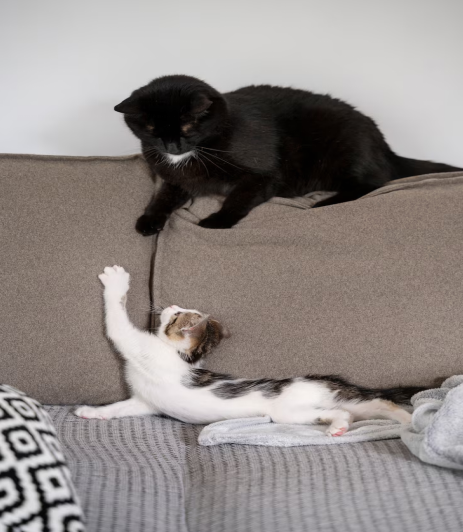
Adding a second cat can solve the problem, or double it. The difference depends on your current cat’s age, temperament, and social history.
Here’s when a companion might help:
● Your cat was raised with littermates and showed strong social play behaviors
● You’re away for long hours, and your cat shows signs of boredom despite enrichment
● They seek constant contact, vocalize frequently, and calm down only with touch or presence
● Play aggression is escalating, especially when it’s directed at humans
In these cases, a well-matched companion can offer shared play, mutual grooming, and co-regulation.
But it can backfire when:
● Your cat is territorial or reactive to other animals
● They’ve never been socialized with other cats
● You don’t have the time or space to properly introduce a new pet
● The new cat has a very different energy level, which can increase stress for both
Adding another cat without prep and structure can trigger territorial spraying, food guarding, and long-term stress. If you’re unsure, test tolerance with short, scent-based introductions first, not face-to-face meetings. Sometimes, smarter care beats more company.
One cat doesn’t mean less care—it means smarter care. Single cat syndrome isn’t about having “enough love”—it’s about giving your cat structure, stimulation, and safe independence.
When you understand the signs and put the right tools in place, you’re not just solving a behavior issue—you’re creating a more secure, confident pet. You’re giving your solo cat a life that feels full, not quiet.
Here’s what we covered in this guide:
● What single cat syndrome is and why it’s more common than you think
● The five core behavioral red flags to watch for
● Why enrichment matters—and how to do it without adding another pet
● How WOpet feeders, cameras, and the WOpet Life app help reinforce structure
● When a second cat might help—and when to hold off
With smart tech from WOpet, you can support your cat’s emotional needs in ways that feel natural, connected, and consistent—even when you’re not home. Because living solo doesn’t have to mean living stressed.
Label:
Popular Post

What to Feed a Sick Dog With No Appetite? [2025 Guide]
May 16, 2023
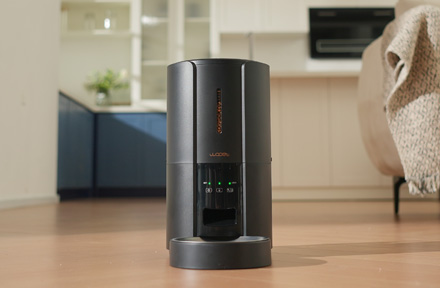
Troubleshooting Common Issues with Automatic Pet Feeders: Tips & Tricks for Pet Owners
Oct 26, 2023
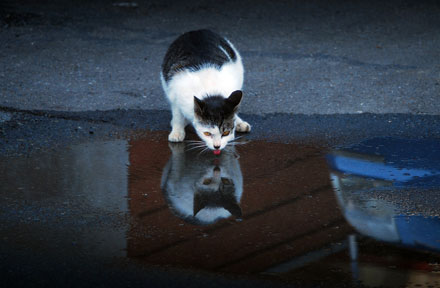
Why Does My Cat Cough After Drinking Water? 8 Potential Reasons
Mar 13, 2023
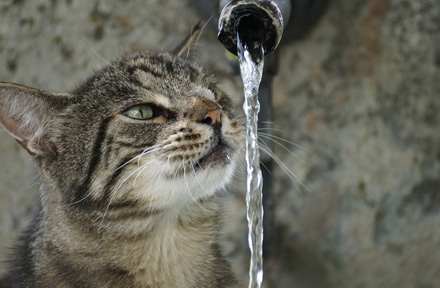
Why is My Cat Throwing up Water? Top 5 Causes Here
Feb 08, 2023
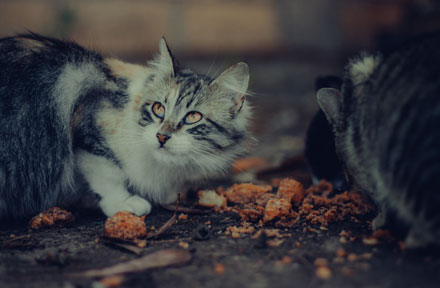
My Cat Only Eats A Little at A Time - What to Do?
Feb 27, 2023
$99.99
$129.99
Copyright © 2025 WOPET. All Rights Reserved.